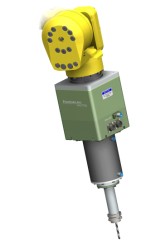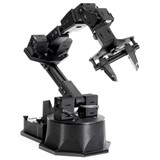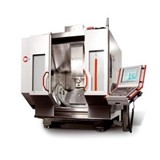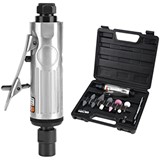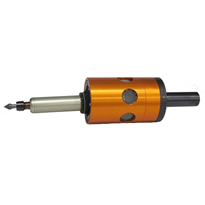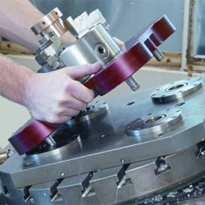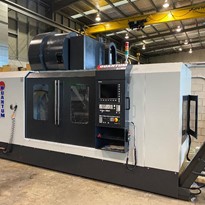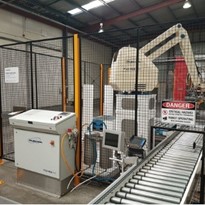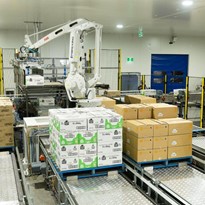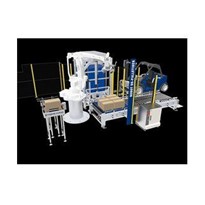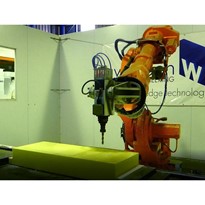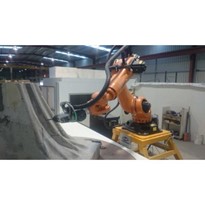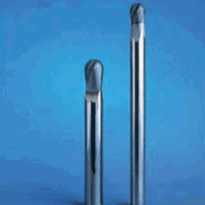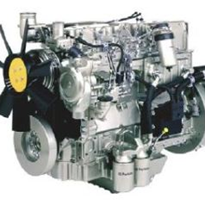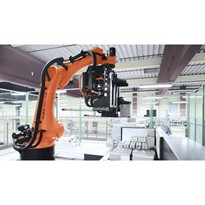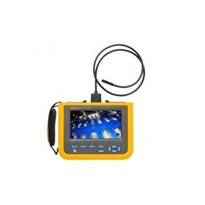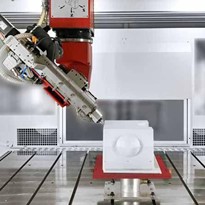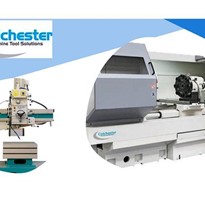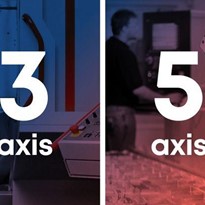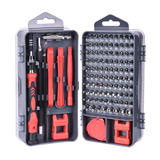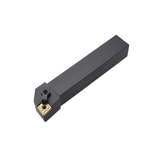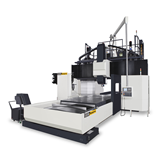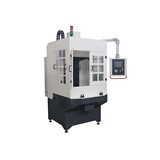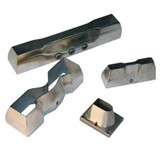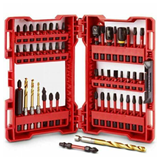The recent advent of special end-of-arm tools for industrial robots allows manufacturers to utilise their standard (and custom) cutting tools in BT-30 and BT-40 toolholders for heavy cutting applications. These tools incorporate high speed servo motors with integral toolholding to provide all the muscle, speed control and holding torque necessary to perform many common machining processes.
As standard CNC tooling is used, it opens up the possibility to utilize a wide range of abrasive disks, wheels, drill bits, milling and other cutting tools. The gripper mechanism maintains the tool position while, at the same time, providing a fast-acting release for rapid tool changes.
Servo motor spindles are water cooled and tool clamp/unclamp is by compressed air. Units are typically available in configurations from BT-30 with 3.8kW and 15,000 rpm through to BT-40 at 7.5kW and 6,000 rpm.
These tools can be mounted directly onto the robot arm, or alternatively, in conjunction with a compliant force control unit which provides the necessary touch and feel feedback necessary for applications such a polishing, linishing, grinding and sanding etc.
Real life applications include a production cell at a major class 8 truck manufacturer. The cell utilizes a force control tool coupled with a servomotor tool changer. The cell is specifically designed for drilling and routing holes in truck cabs as they progress down the assembly line. The drilled and routed holes are for mounting accessory lights, handles, etc. on the truck body. This system allows the manufacturer to easily customize the truck to customer specifications.
In another case, the robotic process drills over 200 x 5mm diameter gating holes in a tyre mold 100mm deep. In the past, deep drilling done by hand has resulted in misaligned holes and bit breakage. Using robotics and a force control tool, bit life and position accuracy is dramatically improved.
Another uses a standard cut-off saw for machining an aluminum die cast part. A high torque servomotor with tool changer is directly attached to the robot wrist with no force tool, effectively turning the system into a low cost machining center. The cutting tool is a high-speed carbide tipped cut-off blade that very efficiently trims the castings to size. This continuous process is no problem as the motor is water-cooled and the blades are quick changed via the automatic collet system.
Although the process of precision machining is now largely automated due to advances in CNC technology, the final processes of deburring, linishing, polishing and grinding remain largely labour intensive. The situation is similar in casting plants where runners and gates need to be removed from cast components, or surfaces need to be linished or blended to provide the desired form and/or surface finish.
Attempts to automate these finishing processes have often failed or been only partially successful due to the lack of “feel” and “response” which is traditionally provided by the human operator. This is no longer the case when applying a compliant force tool with a high speed servo motor/toolchanger.
Recent developments in force compliant tooling systems have now opened the door for these processes to be fully automated, leading to lower production costs, improved productivity, less scrap and waste, higher consistency and greater workplace safety.
PushCorp (www.pushcorp.com), the world leader in force control technology, offers both passive and active force control compliance devices. The active force instruments maintain the applied force of the material removal tool. Should any variation in the force be sensed by the system, it will adjust accordingly. This device is capable of compensating for acceleration and gravity for a given force applied to the surface of the piece being worked. This facilitates the use of higher tool speeds, particularly when the surface has an irregular shape or profile.


